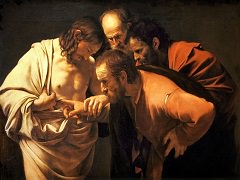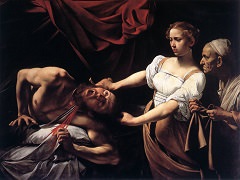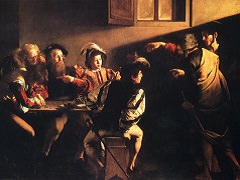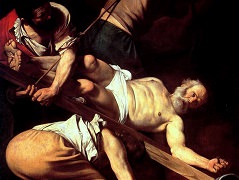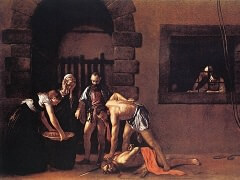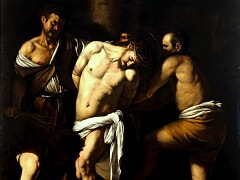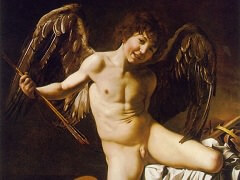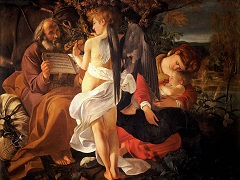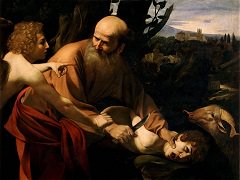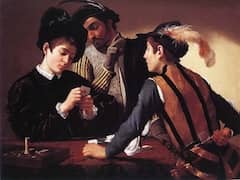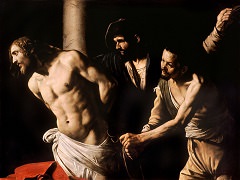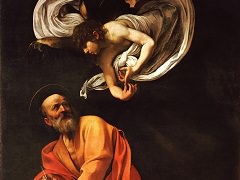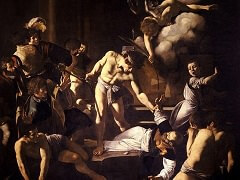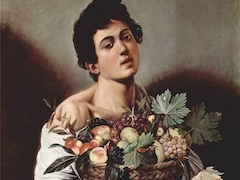The Rest on the Flight into Egypt, 1597 by Caravaggio
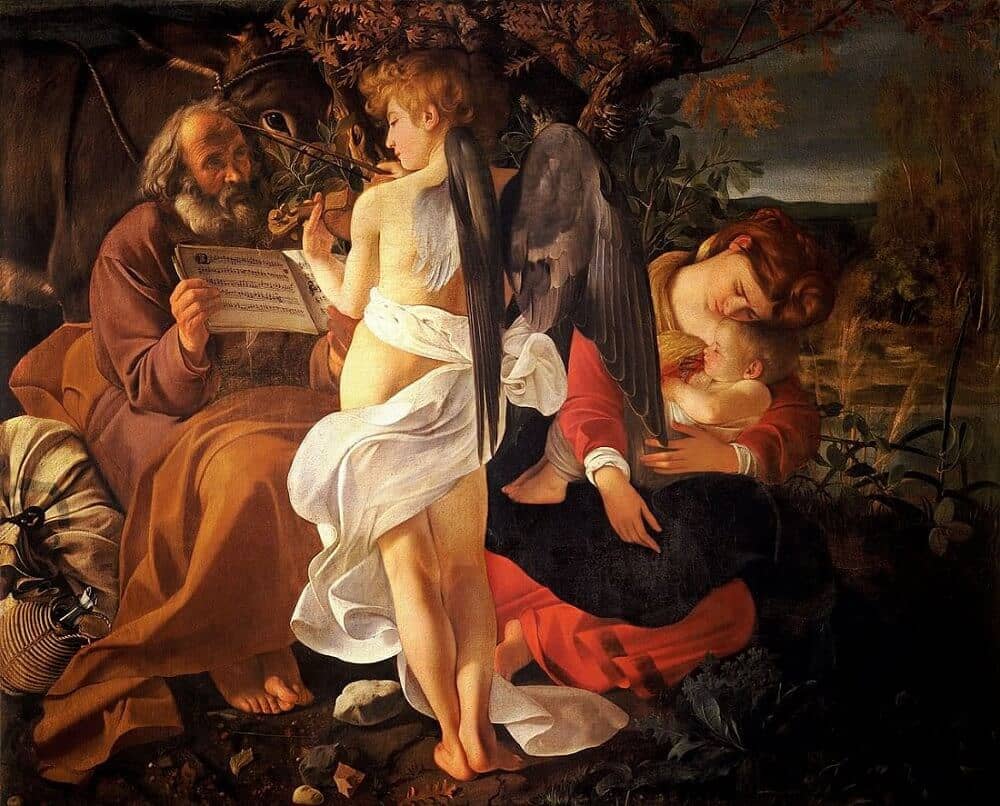
Following an old North Italian tradition, Caravaggio conceived the subject as a kind of'fete champitre, a musical picnic. Set in a verdant and well-watered dell on the Lombard plain, it is as lyrical as comparable works by Giorgione and his successors. But the deserted and unfilled landscape is almost as different from Giorgione's well-tended park-like settings as it is from the harsh wastes of the Sinai Desert. Caravaggio's Madonna and Child and dumpy old Saint Joseph are at home in their rural pastoral setting. Nicely dressed as they are, they are humble: the Virgin is seated on the ground; Saint Joseph rests on a sack-like saddlebag, and the infant, an ordinary pretty s leeping baby, is without even a halo to hint of His divinity. If the angel were less gentle, he would seem an intruder. Perhaps he is a kind of Orpheus, charming even the donkey with his music. Its melody seems as much an emanation of nature as the other sounds, the rustle of the leaves of the Lombardy poplars in the light breeze and the murmur of the water.
Despite the placidity of its mood, this is a complicated picture. The Holy Family sits in a row, countered by the projection of the angel's wings and by the recession of space into the distance. The brightly colored complex drapery patterns and the luxuriant foliage would give the picture a patchwork effect, had not Caravaggio been so skillful in subordinating detail to the whole. As it is, the foliage forms a kind of lacy border to the irregular two-dimensional, hexagonal block of figures. This richness of detail, more than any other single feature of the painting, suggests the possibility of a considerably later date than has been supposed; only in the London Supper at Emmaus, did Caravaggio allow his love of detail such free, not to say extravagant, play.
The painting is appealing and even slightly sentimental. Despite the epicene angel, it is without the psychological problems of Caravaggio's pictures of boys, or their ambiguity of meaning. The assurance of conception and execution demonstrates Caravaggio's full mastery of the art of painting.

